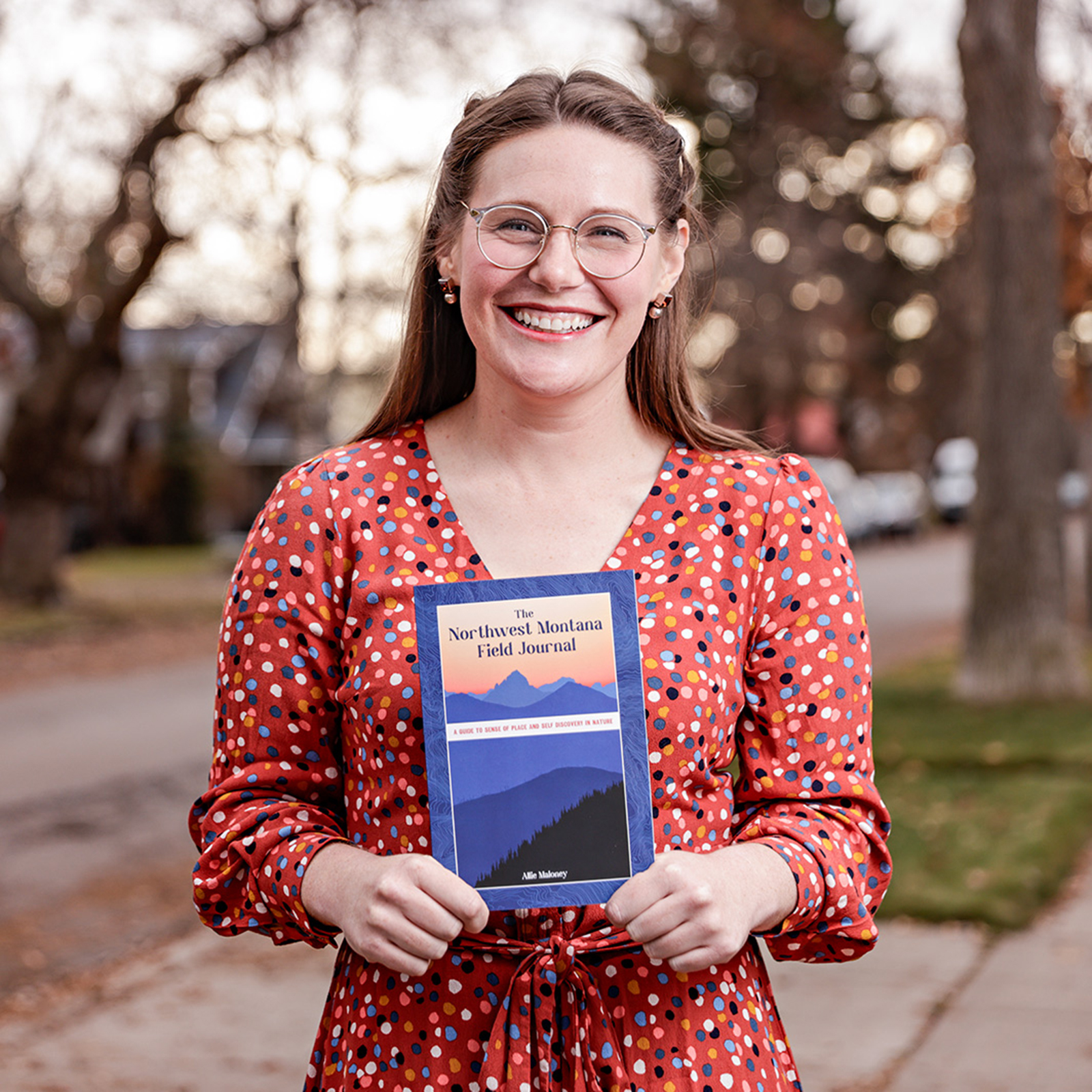
When Allie Maloney moved to the Flathead three years ago, she experienced a feeling that many newcomers and outsiders recognize all too well: profound loneliness. Her closest community of family and friends – the ones who understand her deepest self – live out of state, and she strongly felt this distance.
“I came here right before the pandemic, and I was working remotely almost from the very beginning,” Maloney explained. “I don’t have very many friends here; I don’t have very many hiking partners here. It was kind of a lonely existence.”
These past few years, Maloney has branched out into the community, hosting a “Lord of the Rings” themed Halloween get-together, throwing Hanukkah parties, and knocking on neighbors’ doors to sell sourdough and ravioli. Still, in moments when feelings of isloation take root, she turns to the outdoors for a breath of fresh air.
“The more I can go outside, the better,” she said.
However, there’s a distinction between loneliness and solitude, and Maloney’s new book – the 94-page “Northwest Montana Field Journal” – encourages readers to overcome the former and embrace the latter. The book helps readers deepen their sense of place and self by being alone in nature, no matter their outdoor skill level.
“It gives you a way to be by yourself, be outdoors, and have a reason for doing it,” Maloney said. “Whether you’re visiting or you’re a local, you can speed up your connection to nature and develop your sense of place quicker through journaling and doing activities.”
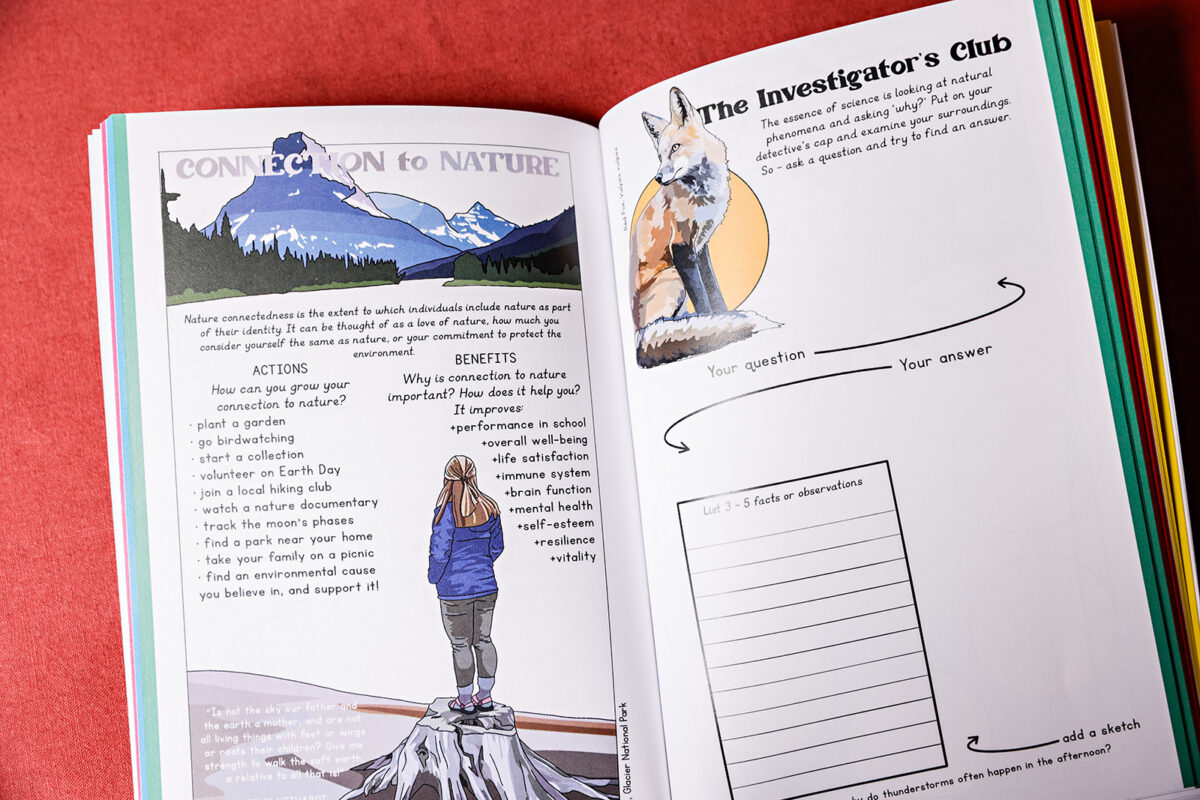
At first sight, the book’s front cover – inky blue with fiery-orange hues of a Montana sunset behind the outline of a looming mountain range – appears mysterious, even unassuming. Inside, the journal features troves of colorful, whimsical depictions of hundreds of living things – from an iconic 400-pound black bear to the often-overlooked Camas wildflower. The drawings are all accompanied with thought-provoking do-it-yourself style reflection exercises.
Maloney has worked as an outdoor education instructor and wilderness guide for years in the Pacific Northwest, so this journal bridges her two biggest loves – art and the outdoors. However, she shared that she’s encountered unexpected challenges with recreating in the Flathead.
“The hard part is finding the motivation to do it alone, or when the weather isn’t great, or when you don’t know where you’re going,” Maloney said. “It’s always hard for me if I haven’t been to a trailhead before and I’m going alone.”
If Maloney feels intimidated to explore new spots on her own, she imagines that the feelings of hesitancy and unfamiliarity are tenfold for those without formal wilderness training. She hopes that the book’s outdoor exercises, along with delightful drawings like a playful yellow-bellied marmot wearing a wizard cape and whimsical rufous hummingbird delivering a letter in its beak, can help bridge that gap to make recreation feel more inviting.
Maloney’s journal also revolves around the assumption that for most people, a blank canvas is not the best vehicle for introspection. In fact, for those hoping to make sense of their thoughts or discover new parts of their inner selves, opening a book to meet the intimidating stare of an empty white page can be discouraging, even isolating.
“The Northwest Montana Field Journal” instead works towards the lofty goal of helping people reflect by giving them exercises to complete, prompts to contemplate, and quotes to consider. It’s intentionally designed so anyone can open the book anytime, to any page they choose and begin their unique journey without the help of a guide or instructor.
“My brain is really good at coming up with ideas, seeing things, asking questions, and then thinking about how to teach them or how to inspire people to ask questions and be creative,” Maloney said. “The journal helps people write in a way that isn’t intimidating, that isn’t the blank page.”
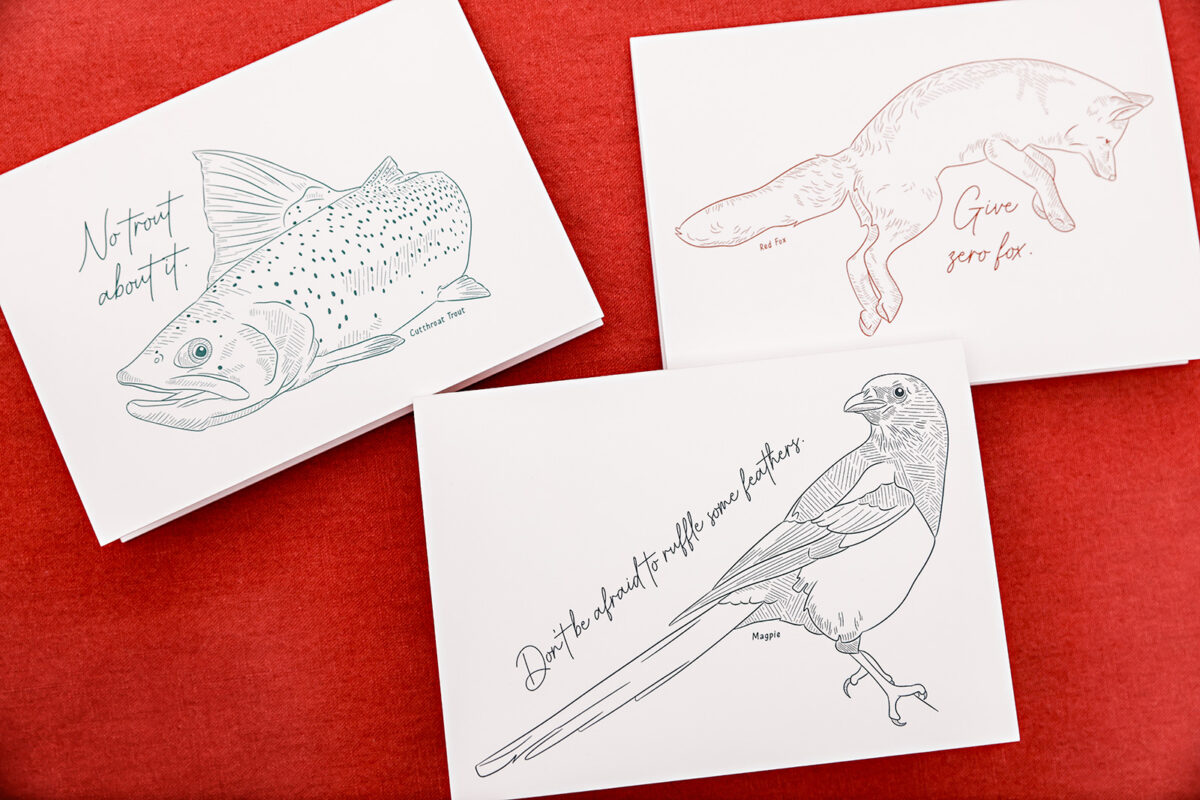
Maloney’s passion for her work and care with which she embarks on every little drawing and exercise shines through in the final product. Page 34 guides readers through the process of writing a letter to their future selves, with a maroon and yellow morning clock butterfly serving as the metaphorical pilot and a carefully chosen William Shakespeare quote becoming a source of inspiration. Page 26 encourages readers to reflect on challenges they’ve faced and how they overcame them; page 42 invites them to take a break from thinking by coloring; page 22 beckons them to memorialize an important moment in their lives while looking at Maloney’s drawing of Crater Lake’s mesmerizing shores. And for those simply looking to learn, pages 58 onwards contain troves of information about the iconic species of animals, plants, and fungi who call Northwest Montana home.
“If visitors buy this field journal, they will be better visitors because woven in is lots of messages about how to be a respectful visitor, understand the history and context of being here, and leave no trace,” Maloney said.
Maloney also considers her journal an antidote to the intensity of Montana hiking culture among locals. To her, being in nature can, and should, mean different things to different audiences.
“The void for locals is understanding that you don’t just need to go to Glacier,” Maloney added. “It doesn’t have to be a big suffer-fest; it doesn’t have to be 100 miles. Even if you just go visit the free Forest Service campgrounds, rental or service cabins, try to find the lakes that are going to be the emptiest or visit the quietest bits of nature all around even if they’re not the most scenic – it helps give us reasons to go out.”
To this end, creating the book helped Maloney deepen her own sense of place and connection to her new home in Northwest Montana. Her process of artistic creation requires both holing up in her den drawing, outlining, and researching as well as getting outside and exploring. This taught her more than she ever expected to learn about the Flathead. She’s been able to take that knowledge to new artistic endeavors – like her most recent poster displaying the Flathead’s poisonous mushrooms.
“I haven’t drawn every species that exists here, but I’ve drawn maybe 50% – if we don’t count insects,” she laughs.
While Maloney’s book itself is full of information about the many species of plants, animals, and fungi in the Flathead, it presents the information in an easily digestible manner. For instance, along with an in-depth description of the bark of the ponderosa pine, also comes a way for someone with no wilderness experience to easily identify it.
“It’s very curated; it’s supposed to be very helpful; it’s supposed to be very unintimidating,” Maloney said. “It’s supposed to get you one level deeper into nature-nerd, without feeling like you have to be able to read a scientific dichotomous key and have a scientific vocabulary.”
Everybody loves and wants to learn more about bears and mountain goats; but Maloney also drew upon her own wilderness experience to educate about the “less exciting” plants and fungi. When writing about the Glacier Lily, rather than delving into the flower’s complicated taxonomy, Maloney chose to highlight its edibleness and the best way to prepare it.
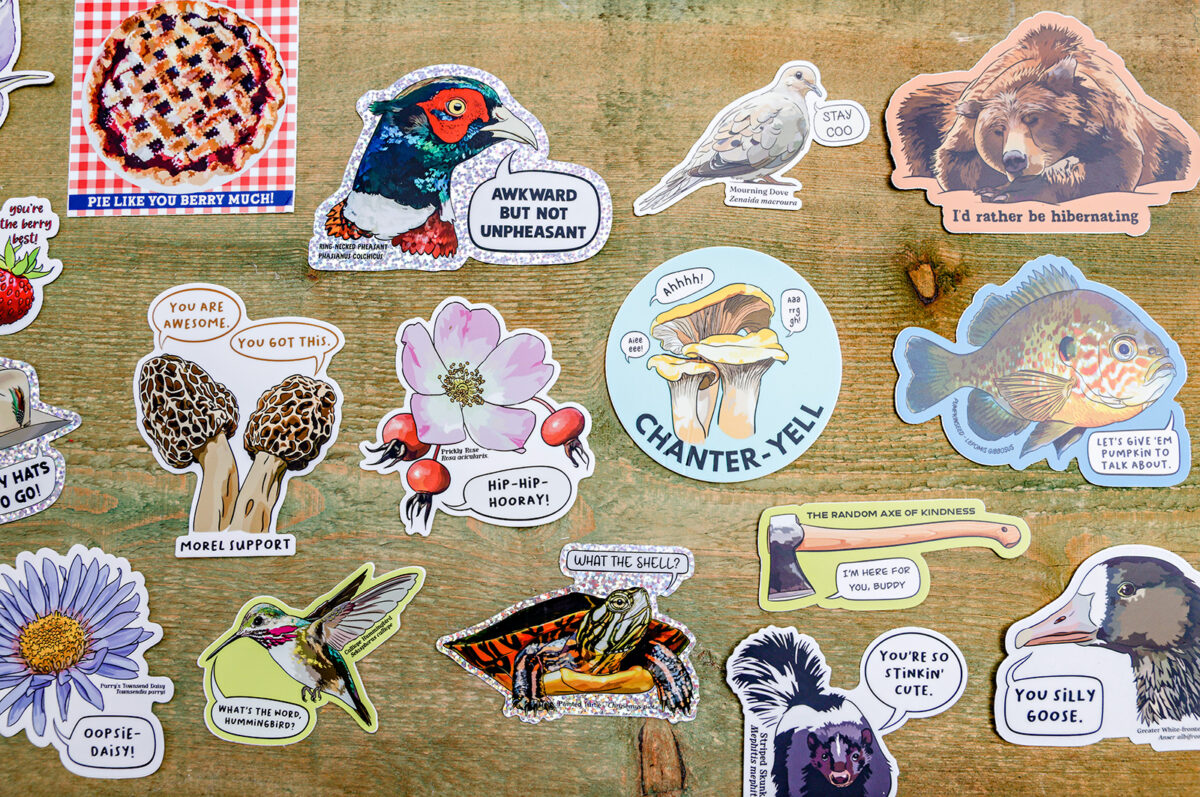
“My specialty within the wilderness community is food and rations and teaching people how to feed themselves and keep themselves going beyond just ‘food for fuel’,” Maloney said. “I love plants, I love foraging, and teaching people what they can eat and what things are called. So that’s a weird thread that ties my outdoor experience with some of the art.”
While creating the art and drawing connections between organisms and people’s daily lives is the most nurturing and inviting part of the book, “Northwest Montana Field Journal” is also deeply rooted in science. The sort of “first rendition” of the book was Maloney’s graduate school thesis, the “Adirondack Field Journal.” The master’s-degree level exercises that Maloney developed years ago made their way into the new book.
“Every page of that journal had to have some scientific basis behind it to prove my thesis, which was that you can connect to nature through journaling,” Maloney said. “We know that sense of place is really good for your mental health and physical health. When you live in a place, your sense of place develops over time. This journal helps you feel more connected to the place you are in.”
“The Northwest Montana Field Journal” has become more than just an homage to Maloney’s new home – it’s been used by crew leaders in organizations like the Bob Marshall Wilderness Foundation as a reference guide for species identification.
While she’s excited that professionals are using her book, Maloney posits that the journal can also serve those who don’t have a relationship with nature at all, as people can use it to cultivate their fondness over time. Maloney herself is proof that being outdoors is not always love at first sight.
“When I was little, I was such a reluctant outdoor child,” Maloney said. “I really didn’t like bugs. And now I do it professionally and I like being outdoors and bugs don’t bother me at all.”
Ultimately, Maloney hopes that the journal can appeal even more broadly, beyond the borders of Montana, to make outdoor experiences more accessible worldwide.
“It’s incredibly universal,” Maloney said. “All of the drawings and information in the back is Northwest Montana, but the actual journaling activities could be done anywhere by anyone and serve the same purpose. My hope is that if you’re a visitor, you could start it while you’re here, but you could keep filling it out and documenting your adventures elsewhere.”
But creating the book was only the first step. Putting this journal (as well as Maloney’s many other products, such as her other book, “A Northwest Montana Alphabet,” and dozens of prints, postcards, stickers, posters, and clothing) out into the world requires tremendous vulnerability. Most of her high moments in this process have arrived when she’s working at craft markets, where she gets to connect with buyers and see the variety of people who feel a connection to her artwork. It’s a simultaneously rewarding and heartbreaking process.
“I really like seeing the dads who get really excited about it,” Maloney said. “I’ve had young dudes and ladies, grandparents, parents, a lot of locals and tourists, and a lot of queer people come and buy it. I think that immediately they notice that it’s accepting and written in an inclusive way.”
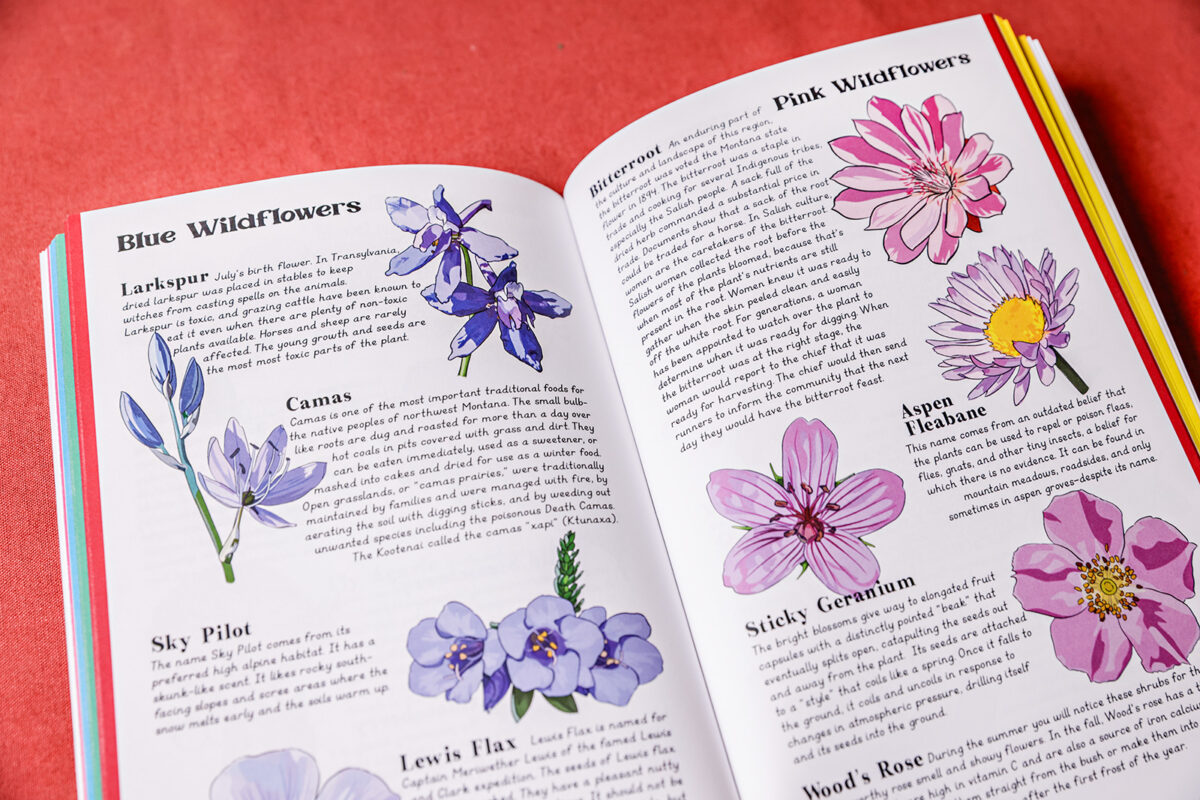
Recently, the Salish Kootenai College bought 50 copies of her book for a course, providing a small but shining spark of encouragement. The lows have been trying to connect with bookstores and shops owners. She said that constantly selling and pitching herself takes an emotional toll.
“It has been pretty discouraging,” Maloney said. “Overall, it’s like you go into a store, you try to find out the buyer or the owner and give them an example of your book. They’re not there, so you come back 20 times, they’re still not there.”
With the many ups and down of selling her products, Maloney is especially appreciative of the stability that comes with the other branch of her work – collaborations with local businesses and nonprofits. Most recently, she completed a project with the Flathead Trails Association to create a comprehensive guide to the Flathead Valley’s recreational opportunities.
The map itself is beautiful and inviting, showcasing colorful depictions of people recreating in a dozen different ways – from biking to hiking to snowboarding. Major Flathead landmarks are clearly designated, and accompanied with simple, one-sentence-long descriptions of their history. Yes, it’s a functional guide, but it’s also so artistic that it could easily find its way framed up on a wall or pasted into a scrapbook.
“The goal was to inspire rather than tell people where all the trails are,” Maloney said. “It’s definitely the hardest thing I’ve ever done, but I love doing these collaborations; and I know immediately it has an end goal and I’m going to send it out into the world.”
Art and work have become increasingly synonymous in Maloney’s life, which for many creative people can be complicated and lead to burnout. However, Maloney has taken care to keep her spark for the outdoors and excitement to create artwork alive in her everyday life.
“I can’t help side questing and trying new things,” Maloney said. “For many years, I’ve tried to learn how to make something new every year. In the past, it’s been felting or mosaics or quilting. This year I’m making bandanas. I don’t have to get good at it, but I do try something new.”
Maloney’s approach to creating new art without the pressure to excel, or even be good at all, mirrors how she hopes readers interact with her journal.
“You don’t need to do anything epic in order to have a really meaningful moment outside. You deserve to be here, be part of this place and there’s always more you can learn.”